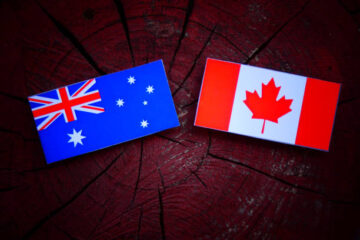For several years, experts have been warning of extreme heat in national parks.
While some are located in southern parts of the country that naturally reach high temperatures, global warming has taken the situation to new extremes — in the summer of 2023, Death Valley National Park set a world record with a thermometer setting of 131°F (55 Celsius) while the Grand Canyon has also been seeing temperatures topping the three-digit mark regularly. A group of epidemiologists enlisted by the National Park Service predicts that instances of heat-related illness will rise by 137% by 2030.
Related: A mistake in a National park led to a tragic accident
Along with illness and even death from dehydration (at the start of June, a couple narrowly escaped disaster after running out of water five miles into a Death Valley hike and had to be helicoptered out), there is also the risk of wildfires.
‘Wildland firefighters are assessing the need for onsite evaluations’
Over in Alaska, two large wildfires are currently burning through Katmai National Park & Preserve. While burning through a remote wooded area and currently posing no risk to humans, the fires need to be constantly monitored as they have the risk to spread further.
More Travel:
A new travel term is taking over the internet (and reaching airlines and hotels)The 10 best airline stocks to buy nowAirlines see a new kind of traveler at the front of the plane
“As a precaution, a team of wildland firefighters are assessing the need for onsite evaluations of several cabins and lodges in the vicinity of the fire to begin developing fire mitigation plans, in case conditions should change,” writes the NPS. “The American Creek Fire and the Naknek Lake Fire (also inside park boundaries) have been monitored by National Park Service and Alaska Division of Forestry and Fire Protection personnel since they were first detected on June 16th. Both fires are likely lightning-caused.”
In a completely different part of the country over in Wyoming, fire managers at Grand Teton National Park have raised the risk of fire in the park known for countless species of birds and wildlife from “low” to “moderate” ahead of the Independence Day holiday. High heat has been one of the factors contributing to higher risk of wildfires. A dry atmosphere is one in which a spark is much more likely to spread.
Related: Cruise tips, tricks and hacks from an expert cruiser
Don’t want to accidentally start a fire? Here are some steps to take
“When determining fire danger, fire managers use several indicators such as the moisture content of grasses, shrubs, trees, and dead and downed materials; projected weather conditions including temperatures and possible wind events; the ability of fire to spread after ignition; and availability of firefighting resources both locally and nationally,” writes the NPS.
While fireworks are never permitted on national park property, the NPS reminded visitors that setting them off to celebrate the holiday is particularly dangerous this year. Campfires, which are permitted in designated areas, are still a fire risk when not “attended and cold to the touch before abandoning.”
“As the Independence Day holiday approaches, visitors and local residents alike are reminded that fireworks are not permitted in Grand Teton National Park, on the Bridger-Teton National Forest, within the National Elk Refuge, or in Sublette and Teton counties in Wyoming,” the agency wrote further. “These fireworks regulations play a critical role in fire prevention.”
Related: Veteran fund manager picks favorite stocks for 2024


